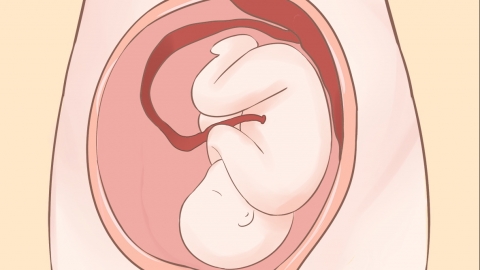What causes marginal placenta previa?
Generally, marginal placenta previa may be caused by delayed endometrial development, excessive placental area, endometritis, multiple uterine procedures, uterine fibroids, and other factors. If experiencing any discomfort, timely medical consultation is recommended. Detailed explanations are as follows:
1. Delayed Endometrial Development
In early pregnancy, if the endometrium develops slower than required for embryo implantation, the embryo may implant in the lower segment of the uterus, gradually forming marginal placenta previa. Adequate nutrition should be ensured during pregnancy; consumption of estrogen-rich foods such as soy products is recommended to promote endometrial development. Regular ultrasound examinations are necessary to monitor changes in placental position.
2. Excessive Placental Area
When the placental area exceeds the normal range, it may extend to the lower segment of the uterus, covering part of the internal cervical os and forming marginal placenta previa. Weight gain should be controlled during pregnancy to avoid excessive fetal growth, which may lead to placental overextension. Intense physical activity should be avoided to prevent sudden increases in abdominal pressure and reduce the risk of placental abruption.
3. Endometritis
Pathogen infection causing endometritis can damage the integrity of the endometrium, affecting normal embryo implantation and possibly leading to placental extension into the lower segment of the uterus. Patients should take medications such as cefixime dispersible tablets, azithromycin dry suspension, and metronidazole tablets under medical guidance to suppress inflammation.

4. Multiple Uterine Procedures
Multiple uterine procedures such as induced abortions and curettage can damage the endometrium, leading to poor repair of the endometrium in the upper segment of the uterus, making it easier for the embryo to implant in the lower segment and form placenta previa. Postoperative medication including estradiol valerate tablets, progesterone capsules, and traditional Chinese medicine like Fuke Qianjin tablets should be taken as prescribed to promote endometrial repair. Effective contraception should also be practiced to reduce the need for uterine procedures.
5. Uterine Fibroids
Fibroids in the lower segment of the uterus can hinder placental migration upward, causing the placenta to remain in the lower segment and form marginal placenta previa. Regular monitoring of fibroid size is necessary. If bleeding occurs, medications such as tranexamic acid tablets, dydrogesterone tablets, and progesterone soft capsules may be used under medical supervision to alleviate symptoms. In some cases, early termination of pregnancy may be necessary.
In daily life, pregnant women should avoid strenuous exercise and sexual activity, maintain regular bowel movements, closely monitor vaginal bleeding, and seek immediate medical attention if any abnormalities occur.




